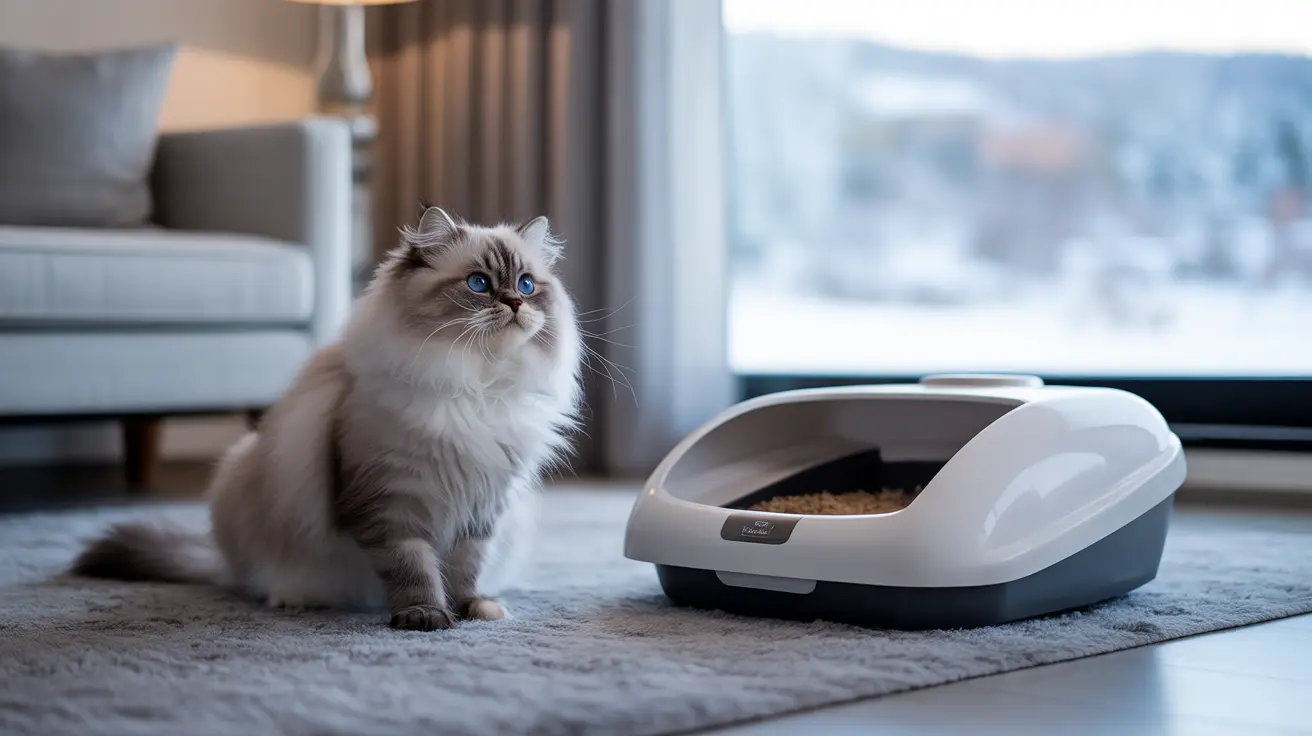Modern self-cleaning litter boxes represent a revolutionary advancement in pet care technology, offering cat owners a hands-free solution to one of the most tedious aspects of cat ownership. These innovative devices combine smart sensors, mechanical engineering, and automated cleaning cycles to maintain a consistently fresh and hygienic environment for your feline friend.
Understanding how these sophisticated systems work can help you make an informed decision about whether a self-cleaning litter box is right for your household. Let's explore the mechanics, benefits, and essential features of these automated pet care solutions.
Core Operating Mechanisms
Self-cleaning litter boxes employ various sophisticated mechanisms to automate the waste removal process. Most models utilize either motion or weight sensors to detect when your cat enters and exits the box. After your cat leaves, the system typically waits for a predetermined period (usually 5-15 minutes) before initiating its cleaning cycle.
The most common cleaning mechanisms include:
- Automated rake systems that sift through the litter
- Rotating globes that separate waste from clean litter
- Conveyor belt systems that transport and filter litter
- Sifting screens that separate clumped waste
Smart Sensor Technology
Advanced sensors play a crucial role in the safe operation of self-cleaning litter boxes. These devices monitor:
- Cat presence and movement
- Weight distribution
- Waste accumulation levels
- Cleaning cycle timing
- Safety parameters
Essential Components and Features
A typical self-cleaning litter box consists of several key components working in harmony:
- Main litter chamber
- Waste collection compartment
- Mechanical cleaning mechanism
- Control panel or smart interface
- Safety sensors
- Odor control systems
Waste Management System
The waste collection system efficiently separates and stores solid waste in a sealed compartment, significantly reducing odors and maintaining cleanliness. Most models can operate for several days before requiring emptying, depending on the number of cats using the box.
Maintenance Requirements
While self-cleaning litter boxes drastically reduce daily maintenance, they still require some regular attention:
- Emptying the waste compartment every 3-7 days
- Replacing litter as needed (typically every 2-4 weeks)
- Cleaning sensors and mechanical components monthly
- Checking for proper operation and potential blockages
Benefits of Automated Cleaning
Self-cleaning litter boxes offer numerous advantages over traditional manual boxes:
- Reduced daily maintenance requirements
- Improved odor control
- Consistent cleanliness
- Enhanced hygiene for both cats and owners
- Reduced litter tracking
- Usage monitoring capabilities
Frequently Asked Questions
How does a self-cleaning litter box work, and what are its benefits?
Self-cleaning litter boxes use motion or weight sensors to detect cat activity, then automatically remove waste through mechanical systems like rakes or rotating chambers. Benefits include reduced maintenance, better odor control, and consistent cleanliness for your cat.
What are the best types of litter to use in a self-cleaning litter box?
Most self-cleaning litter boxes work best with premium clumping litter or specialized crystal litter. The litter should be compatible with the box's specific cleaning mechanism and able to form solid clumps for effective waste removal.
How often should I empty the waste drawer in a self-cleaning litter box?
The waste drawer typically needs emptying every 3-7 days, depending on the number of cats using the box and their bathroom habits. Some smart models will alert you when the waste drawer needs attention.
Can multiple cats use the same self-cleaning litter box efficiently?
While most self-cleaning litter boxes can accommodate multiple cats, it's recommended to have one box per cat plus an extra. Multiple cats will require more frequent waste drawer emptying and maintenance.
How do self-cleaning litter boxes help in controlling odors and maintaining hygiene?
Self-cleaning litter boxes control odors through prompt waste removal and sealed waste compartments. The regular cleaning cycles maintain a consistently hygienic environment, reducing bacterial growth and preventing ammonia buildup.
Understanding how self-cleaning litter boxes work can help you maximize their benefits and ensure proper maintenance for optimal performance. These innovative devices continue to evolve, making cat care more convenient and hygienic for both pets and their owners.






